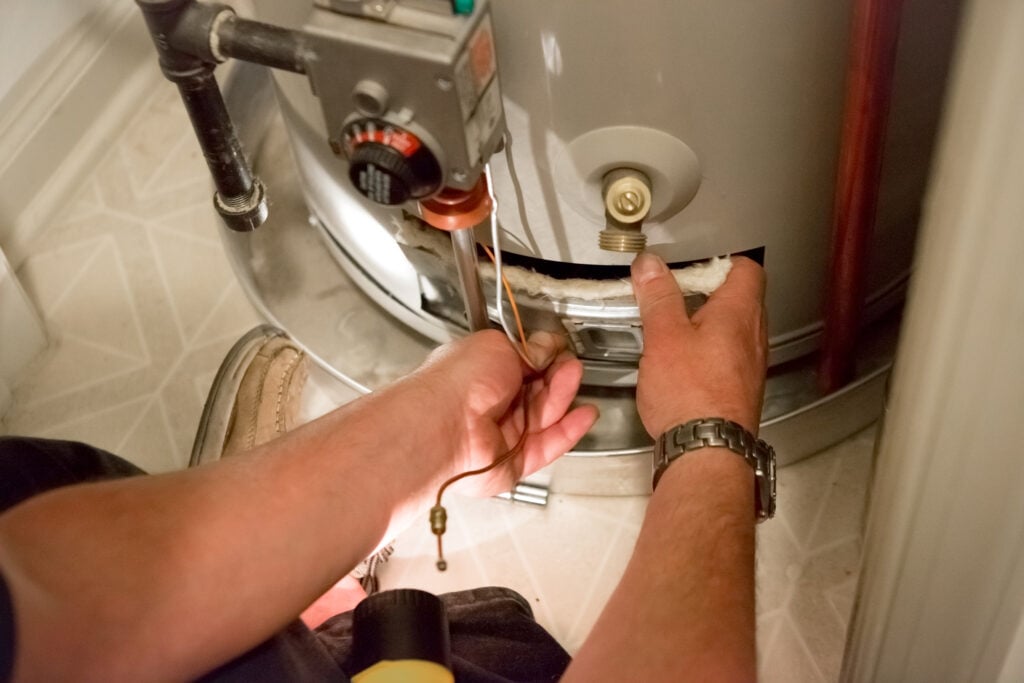
In most households, you can turn on the hot water tap and hot water comes pouring out. This wonderful convenience enables us to take hot showers, wash dishes and clothes and keep our homes cleaner. When the hot water shuts down, it’s a major problem. You can ensure more years of good service from your water heater by doing regular maintenance on your unit.
Not all maintenance can be done by a homeowner but some definitely can. Typically, a water heater will last ten years. Some may need replacement after six years and others will last 15 years or more. If you have an electric water heater, you can expect it to last a few years longer than a gas water heater.
After ten years, you should be prepared for signs that your water heater needs replacement.
A Maintenance Action You Can Do at Home
With just a modest do-it-yourself ability, there is a way you can extend the life of your water heater. Flush it on a regular schedule and you can prevent some problems. Here’s how to do it:
- Turn off the power to an electric water heater or turn off the gas to a gas water heater. To turn off the electrical supply, flip the switch at the breaker panel.
- Turn off the cold water supply to the water heater.
- Attach a hose to the drain at the bottom of the tank, run the hose outside or to another safe place and let the water run out until it’s clear.
- Run the faucets inside the home while you’re draining the water heater to help the water drain completely.
- Check the water being drained to see if the water is rusty or if it contains sediment. If the drained water contains a lot of sand or rusty sediment, schedule this action for twice a year.
- Once all the water is drained out, turn on the cold water supply and let the water run through the water heater. Run it for a few minutes until the water leaving the water heater is completely clear.
- Close the drain at the bottom of the water heater. Close any inside faucets that are open.
- Restore the electricity or gas supply to the unit.
- Give the water time to heat up and test the temperature.
- Keep your water temperature setting between 120 and 130 degrees or even lower. The hotter the water, the faster the corrosion inside your tank. You can run the water over a thermometer to check the temperature of the water being provided.
Repeat your water heater flush annually. If you have hard water or if you see sediment or rust being flushed out, schedule it for every six months. Also, a water softener can help your water heater last longer because there will be less mineral buildup inside the unit.
Do You Need a New Water Heater?
Signs your water heater needs replacement include leaking water or making rumbling or gurgling noises. In some cases, rumbling or gurgling can be improved by flushing the water heater to remove mineral buildup but this generally means that the end is near.
If your unit stops providing hot water, it might require replacement or it might just need new electrical elements. Replacement of an electric element is modest and only requires about an hour to install it.
If you have a gas water heater and the gas valve needs to be replaced, then you have to weigh the cost of replacing the valve with the cost of a new water heater. A new gas valve, installed, can cost $500 or $600, meaning that it might be more cost-effective to replace the whole unit if it is approaching ten years of age.
Get the Plumbing Help You Need When You Need it
Even if you need hot water in the middle of the night, you can call us at Rocketman Plumbing and we’ll be there in a flash. We can help with any plumbing problem you may have. Call us now at (505) 243-1227.
